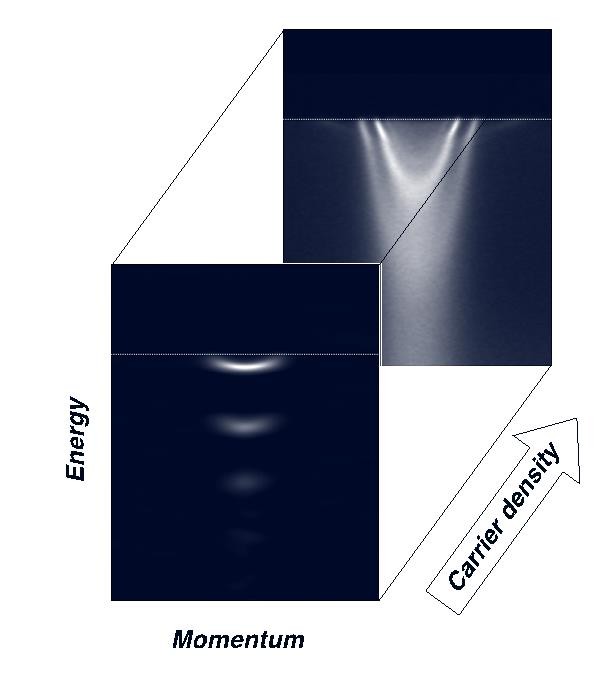Tailoring Novel Superconductivity
The band insulator strontium titanate SrTiO3 (STO), widely used as a substrate for growing oxide films, is a highly fascinating material. Recently, novel physical properties have been observed at the interface between STO and the materials grown on it. For instance the appearance of superconductivity above the temperature of liquid nitrogen, observed in a single monolayer of FeSe (its critical temperature is higher than in any iron-based bulk material) grown on the STO surface, suggests a key-role of the STO substrate. An international group of scientists has teamed up under the lead of researchers at the Paul Scherrer Institute (PSI) and the University of Geneva to investigate why STO is special. The measurements performed on the two-dimensional electron liquid (2DEL) present at the STO surface, revealed that at low carrier density electrons were always accompanied by a quantized dynamic lattice deformation, i.e. a cloud of phonons. Together with the electron, the phonon-cloud formed a new composite quasiparticle called “Fröhlich Polaron”. These “Fröhlich Polarons” were observed to still move in a band-like fashion through the solid, although with an increased effective mass. In addition, they found that by increasing the doping the electrons and phonons interact weaker and over shorter distances, causing the “Fröhlich Polarons” to dissociate. For their studies, the scientists used high-resolution Angle-Resolved Photoemission Spectroscopy (ARPES), a uniquely powerful technique for visualizing the motion of electrons in crystalline solids. These findings, published in Nature Materials, provide a clear microscopic basis for understanding why superconductivity has been observed in different STO based systems and are a crucial step in the search for a tuning knob with which to tailor interface superconductivity.
